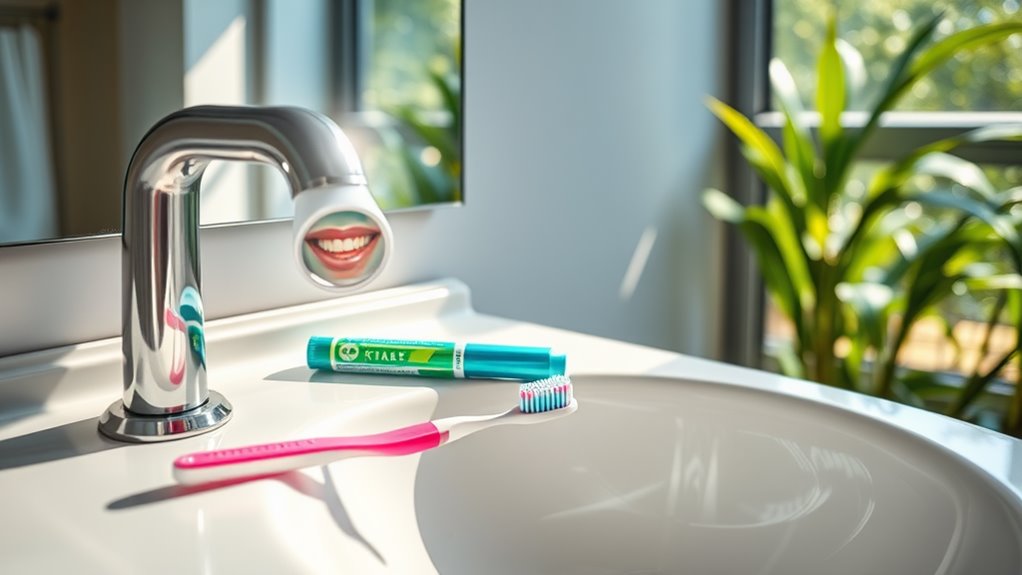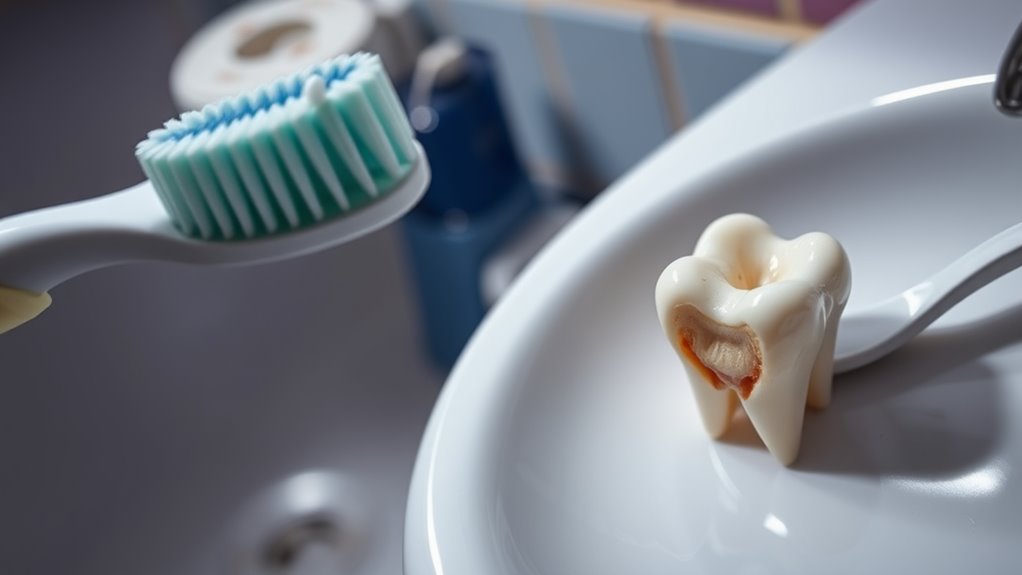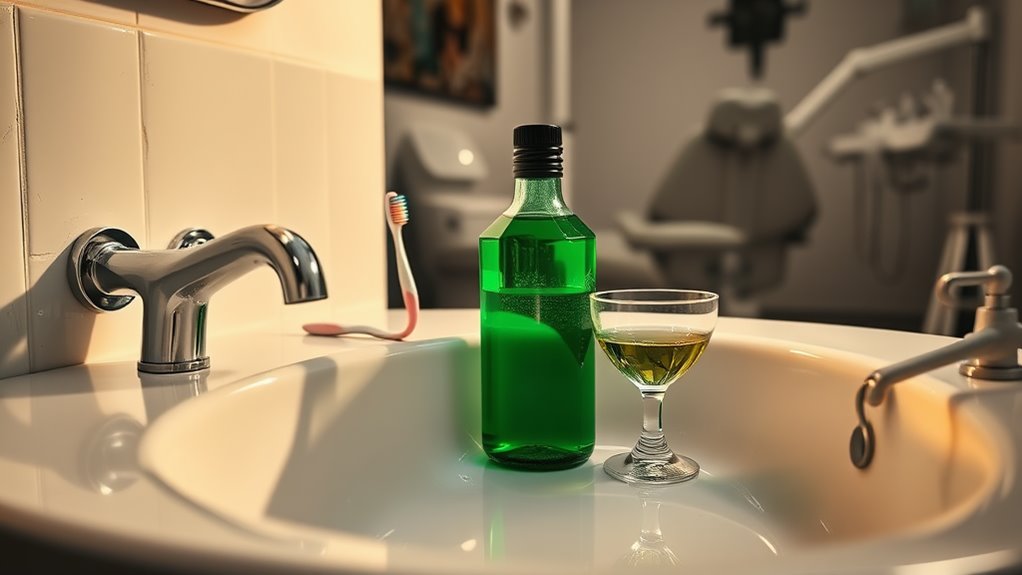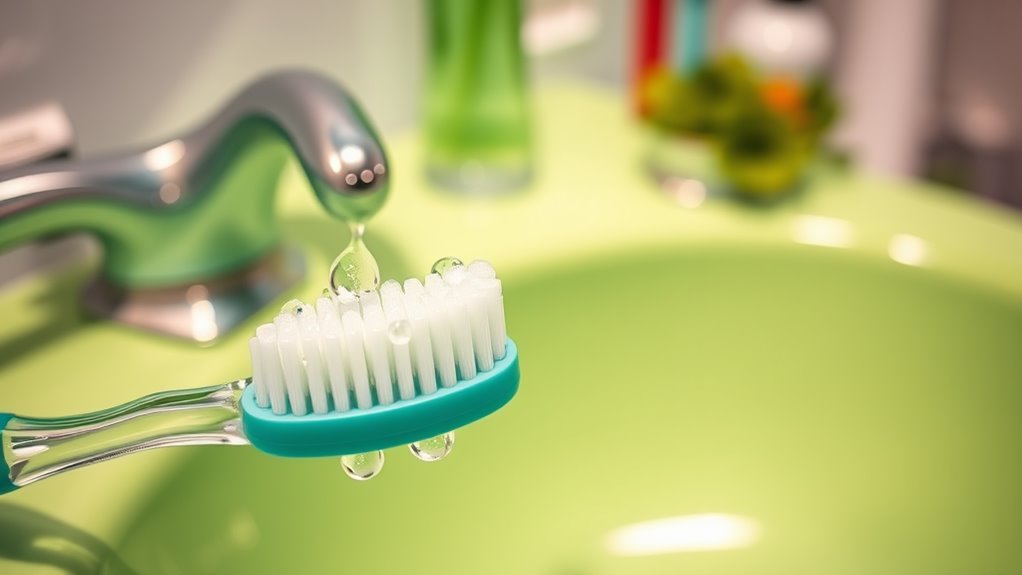How to Tell If Your Toothbrush Is Doing More Harm Than Good
Key Takeaways
- Check for frayed or bent bristles; they indicate wear and reduced cleaning effectiveness.
- Examine the brush head for grime; buildup can harbor harmful bacteria.
- Replace your toothbrush every three to four months to maintain hygiene and effectiveness.
- Avoid using hard bristles; they can cause gum damage and increase sensitivity.
- Ensure you choose a brush with a comfortable head size and soft bristles for optimal care.
Signs Your Toothbrush Is Worn Out
Your toothbrush is essential for maintaining oral hygiene, but it’s not meant to last forever.
Look for signs of toothbrush damage, like frayed bristles or a grimy head. If the bristles are bent or lose their stiffness, it’s time to replace it.
A worn-out toothbrush won’t clean your teeth effectively, compromising your dental health and allowing plaque buildup. Additionally, regular replacement every three to four months is vital to prevent harmful bacteria from entering your mouth. Replace it every three to four months.
The Impact of an Overly Hard Bristle
Using a toothbrush with overly hard bristles can lead to significant oral health issues. You might experience gum recession and enamel wear, which compromise the protection these structures provide. While effective plaque removal is essential, it shouldn’t come at the cost of damaging your teeth and gums. Gentle brushing techniques are crucial for maintaining gum and tooth health.
Gum Recession Risks
While maintaining proper oral hygiene is essential, choosing the right toothbrush is equally important to prevent gum recession.
Using a toothbrush with overly hard bristles can damage your gums, causing them to recede. This exposes tooth roots, increasing sensitivity and the risk of decay.
Opt for soft bristles to effectively clean without harming your gums, ensuring a healthier smile in the long run.
Enamel Wear Concerns
When choosing a toothbrush, one must consider the impact of bristle hardness on enamel health.
Using a toothbrush with overly hard bristles can lead to significant wear on your enamel.
To protect your teeth:
- Opt for soft bristles for gentle cleaning.
- Brush gently to avoid excess pressure.
- Replace your toothbrush every three months.
Effective Plaque Removal
Choosing the right bristle hardness is essential for effective plaque removal. Overly hard bristles can damage your gums and enamel, leading to more dental issues. Instead, opt for softer bristles that clean effectively without causing harm.
| Bristle Hardness | Effect on Teeth |
|---|---|
| Soft | Gentle on gums, effective cleaning |
| Medium | Balanced cleaning power, slight gum irritation |
| Hard | High risk of damage, ineffective plaque removal |
How Bacteria Accumulate on Your Toothbrush
Although you may keep your toothbrush tucked away in a bathroom cabinet, it’s still exposed to a variety of bacteria that thrive in damp, warm environments.
These bacteria can accumulate through:
- Contact with the bathroom air
- Residue from your mouth after brushing
- Lack of proper cleaning and storage
Being aware of these factors helps you maintain better oral hygiene and minimizes potential health risks.
The Importance of Replacing Your Toothbrush Regularly
Many people underestimate the importance of replacing their toothbrush regularly. A worn-out toothbrush can reduce its effectiveness, making it harder to remove plaque and food particles.
Dentists recommend changing your toothbrush every three to four months, or sooner if the bristles fray. Regular replacement guarantees ideal oral hygiene, minimizing the risk of decaying teeth and gum disease, ultimately supporting your overall health. Additionally, using a contaminated brush can introduce harmful bacteria like E. coli into your mouth, leading to further health complications.
Choosing the Right Toothbrush for Your Needs
When it comes to maintaining good oral health, selecting the right toothbrush is essential for effectively cleaning your teeth and gums.
Consider these factors to find a toothbrush that suits your needs:
- Bristle type: Choose soft bristles to protect your gums.
- Size: Select a head size that fits comfortably in your mouth.
- Handle: Look for a non-slip grip for better control. Additionally, using a toothbrush that complements your dental care routine can help maintain strong teeth and prevent decay.
Proper Toothbrush Care and Maintenance Tips
To keep your toothbrush effective and extend its lifespan, proper care and maintenance are essential. Follow these simple tips:
| Tips | Details |
|---|---|
| Rinse After Use | Always rinse your toothbrush with water. |
| Store Upright | Let it air dry in an upright position. |
| Avoid Covering | Don’t cover it, allowing airflow helps. |
| Replace Regularly | Change every 3-4 months or sooner if worn. |
To prevent bacterial buildup, always ensure you replace your toothbrush regularly as old brushes can harbor harmful bacteria.




